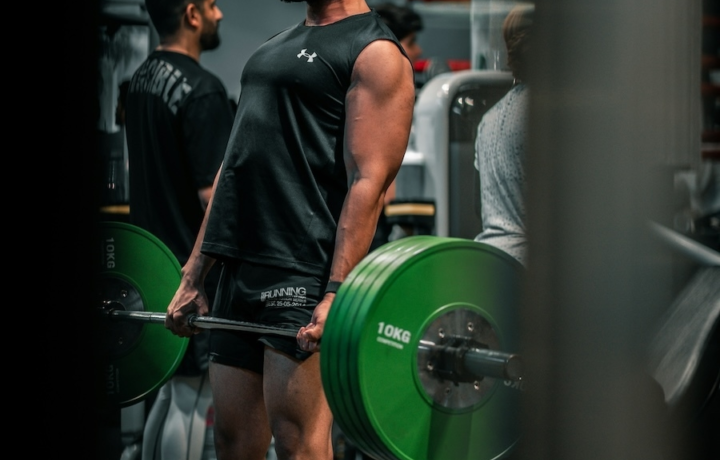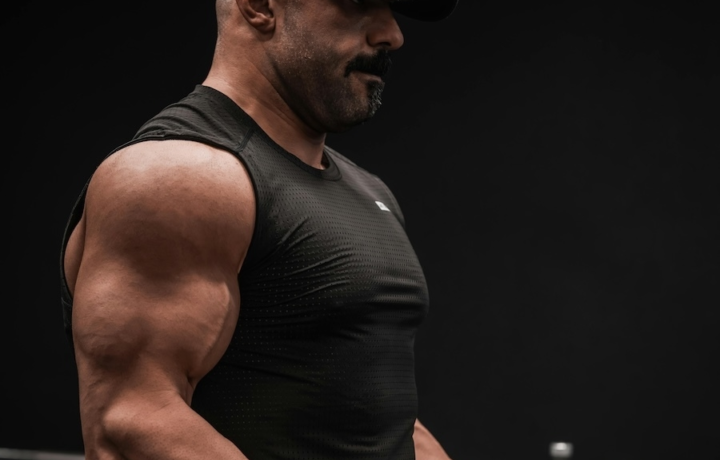Everything you need to know to train, grow and stay consistent
Bodybuilding
Bodybuilding is all about building muscle mass and sculpting your physique through structured, consistent training. Whether you’re new to lifting or deep into your hypertrophy phase, this is your central hub. Discover key terms, proven workout structures, popular splits like PPL and Bro Split, and answers to common questions: all in one place.
FAQ (6)
Strength training prioritizes lifting heavier weights to increase max strength. Bodybuilding emphasizes muscle size, shape, and symmetry. While both use resistance training, bodybuilding typically involves higher reps, more isolation exercises, and more volume.
While not the focus, low-to-moderate intensity cardio (e.g. walking, cycling) helps improve heart health, support fat loss, and enhance recovery. Many bodybuilders include 2–3 cardio sessions per week, especially during cutting phases.
Overtraining can happen when you push your muscles too hard without allowing enough recovery time. To avoid overtraining, make sure to balance your workouts with rest days, incorporate active recovery, and listen to your body. Avoid training the same muscle group on consecutive days, and ensure you're getting enough nutrition to support muscle repair. Tracking your progress and taking deload weeks every 4–6 weeks helps to manage training volume and intensity.
Bodybuilding typically involves 4–6 days of training per week, focusing on different muscle groups each day. A common split is to train each muscle group 1–2 times per week, with adequate recovery time in between. Rest and nutrition are just as important as the workouts themselves, so ensure you get plenty of sleep and consume the right amount of protein to support muscle repair and growth.
For bodybuilding, aim for 3–4 sets per exercise with 8–12 reps per set. This rep range is ideal for hypertrophy (muscle growth). For compound lifts, use heavier weights with fewer reps (4–6), and for isolation exercises, use lighter weights with higher reps (12–15). Ensure progressive overload by gradually increasing weight or reps over time to stimulate muscle growth.
The best bodybuilding exercises include compound lifts like squats, deadlifts, bench presses, and rows, which engage multiple muscle groups for mass and strength. Isolation exercises like bicep curls, tricep extensions, leg extensions, and calf raises target specific muscles for definition and symmetry. A well-rounded bodybuilding routine uses both types of movements to achieve full muscle development.
Definitions
Time under tension refers to the total time your muscles are actively working during a set. Slower, more controlled reps increase TUT and lead to greater fatigue in the target muscle. A typical bodybuilding set might aim for 30–60 seconds of TUT. For example, doing 10 reps at a 3-second lowering tempo would give you ~30 seconds of TUT. The goal isn’t speed — it’s muscle control.
This is the ability to focus on and control the muscle you're training during an exercise. For example, in a lat pulldown, it means actively squeezing your lats instead of letting your arms do the work. A strong mind-muscle connection helps with:
- Better form
- Improved muscle activation
- Greater hypertrophy over time
It’s especially important in isolation movements and advanced bodybuilding.
Progressive overload is the principle of gradually increasing the difficulty of your workouts to stimulate continued muscle growth. This can be done by:
- Adding more weight
- Increasing reps or sets
- Slowing down tempo (increasing time under tension)
- Reducing rest time
Without progressive overload, your muscles adapt and growth stalls. It’s the single most important principle behind long-term results.
Split training means dividing your weekly workouts by muscle groups or movement patterns. For example:
- Push/Pull/Legs (PPL): One day for pushing muscles (chest, shoulders, triceps), one for pulling muscles (back, biceps), and one for legs.
- Bro Split: One muscle group per day (e.g. chest on Monday, back on Tuesday).
This structure allows each muscle group time to recover while increasing total training volume — a key factor for muscle growth.
Hypertrophy is the technical term for muscle growth — specifically the increase in the size of muscle fibers after repeated stress through resistance training. In bodybuilding, training is geared toward maximizing hypertrophy by using moderate weights, moderate-to-high reps (typically 6–15), short rest periods, and controlled form. Nutrition, sleep, and recovery are just as important, as muscle growth happens outside the gym.












